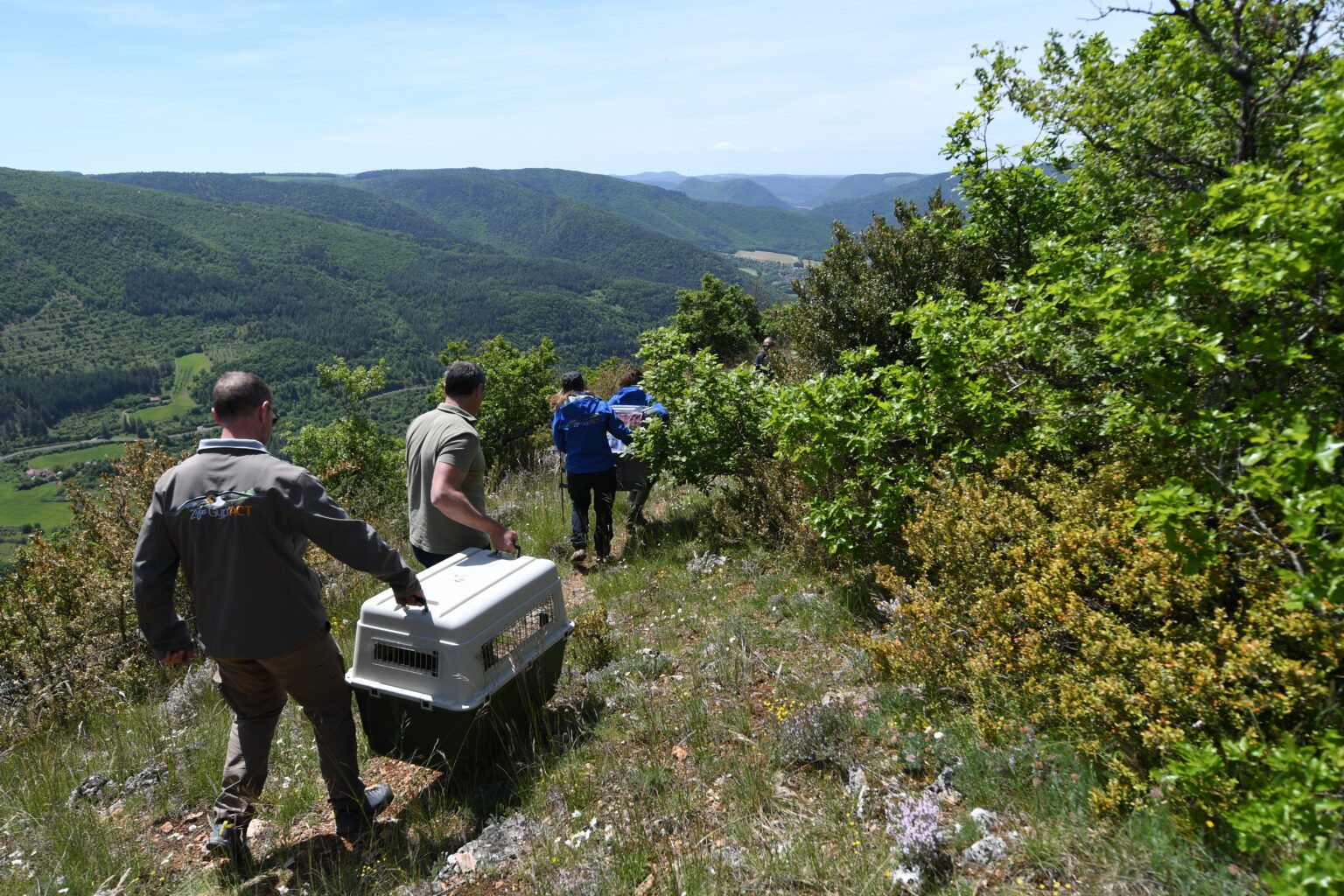
The endangered Egyptian Vultures in Italy are better off thanks to ongoing conservation actions! Once again, several chicks hatched in captivity in 2021, which have a special purpose – to help restock the small remaining wild population in the country.
Several Egyptian Vultures in Italy hatched in captivity

The 2021 Egyptian Vulture captive breeding season in Italy saw great results. A total of seven chicks hatched between the end of May and the beginning of July 2021 at CERM Centro Rapaci Minacciati Association.
These chicks are the offspring of four different Egyptian Vulture pairs. CERM artificially incubated all the eggs, and then two adult males received one egg each in their nests shortly before hatching, while five eggs hatched in the incubator with the assistance of the Centre’s team.
Raising the captive-bred chicks

Feeding one of the chicks with puppet in the early days © CERM/ LIFE Egyptian Vulture 
The two 35-day-old Egyptian Vultures raised by Cesare © CERM/ LIFE Egyptian Vulture
The males Alex, Cesare and Primo raised the first five chicks that hatched. Alex is a wild Egyptian Vulture that endured a physical problem with one of its wings, making him unsuitable for life in the wild. Still, based on his previous experience taking care of several chicks, he was known to be a good foster father.
For Primo and Cesare, on the other hand, this was their first experience as fathers, and single ones at that, since the team removed their respective partners from their ‘home’ aviaries to avoid conflicts, which often occur during this reproductive phase. Both of these vultures hatched in captivity from the CERM captive breeding stock. But while Caesar is only nine years old, Primo is 24, and it is remarkable that at this age he was able to perfectly mate, breed and raise two chicks for the first time.
From captivity to the wild

Transferring the Egyptian Vultures to the release aviary © LIFE Egyptian Vulture 
Final inspection of the young Egyptian Vultures before placing them in the aviary © LIFE Egyptian Vulture 
Placing the Egyptian Vultures into the aviary © LIFE Egyptian Vulture 
The five young Egyptian Vultures in the aviary © LIFE Egyptian Vulture 
The LIFE working group that carried out the 2021 of Egyptian Vultures in Italy © LIFE Egyptian Vulture
In mid-August, five Egyptian Vultures named Gabriel, Juanita, Pablo, Lucas and Isabel that hatched in June at CERM left their life in captivity for one in the wild. The LIFE Egyptian Vulture team transported them to Basilicata, their new but temporary home. Upon arrival, they placed the young vultures in a nest box installed in the northern part of the Murgia Materana Park, near a supplementary feeding station for birds of prey.
The five vultures then stayed for three days in the nest, observing their surroundings and getting used to their environment. During this time, the project team kept a close eye on the birds, but from afar. They constantly monitored and watched their every movement and behaviour through a video surveillance system. Over the previous three years, 14 other young Egyptian Vultures were in a similar position as these five birds, being released in the same way during four different release operations.
Freed into the wild
On 20 August 2021, it was time for freedom. The doors opened, and within a few hours, all five captive-bred Egyptian Vultures flew away into the Murgia Materana Park. Ever since, they began to explore the surrounding area in short flights, while feeding and interacting with kites and ravens who visited the feeding station. The birds will likely start their migration to Africa soon, where they will spend the next few years before returning to Italy unless they are like Egyptian Vulture Diego, who chose to spend winter in Sicily and is currently touring Europe.
A collaborative effort
ISPRA, Biodiversità sas e da De Rerum Natura sas and CERM organised the 2021 release of Egyptian Vultures in Italy within the LIFE Egyptian Vulture project.

Furthermore, various units of the Carabinieri Forestali were constantly engaged on-site to prevent disturbance. Once the birds start their autumn migration, CUFAA will carry on the surveillance along their travels, particularly in western Sicily, where poaching episodes are prevalent. The project team can also follow their real-time movements thanks to the data signals coming from the GPS transmitters installed on their back, that were donated by us at the Vulture Conservation Foundation (VCF).
Stay tuned with the movements of the Egyptian Vultures by following the VCF on Facebook and Twitter!

Source: LIFE Egyptian Vulture



